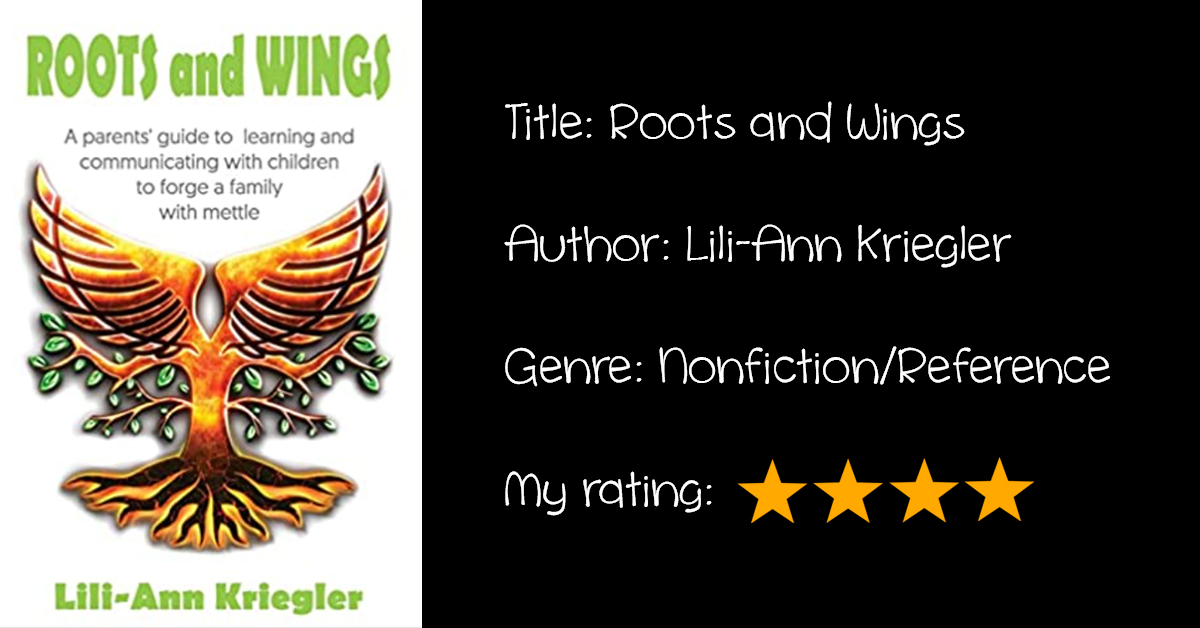Review: “Roots & Wings: A parent’s guide to learning and communicating with children to forge a family with mettle”
This book came to me via an ARC program, and I chose it out of a few others because I was interested in the subject.
The Premise
This non-fiction book explores the different phases of childhood development with a focus on the family unit and how best it can function to create a cohesive “mettle” for the next generation. It serves as a go-to guide for parents and guardians to use all the available tools to expand their minds and consider the holistic experience of child-rearing in the modern world, enabling them to “forge” a resilient, cohesive and high-functioning family.
The Pros & Cons
Opening with the infamous poem (and one of my own personal favourites!) “The Tyger” by William Blake, the author uses Blake’s exaltation of creation as inspiration to frame her own analogy of a blacksmith’s workshop as the “creator” of the “mettle” of a family, which she defines as a proactive point of view and spirit of resilience that one can adopt to improve the chance of life success.
Her framework explores the idea of the family as a system that works with “mettle” bows and arrows, which contain the shifting perceptions, values, and beliefs that evolve as you grow with your family. The goal is to craft positive interactions moment to moment — “small joyful routines” which weave “the golden thread of the future” that thereby “forge” the family life you wish to have.
Admittedly, there is quite a lot of preamble at the beginning, but once the bulk of the book gets underway, you realise that much of this introduction was necessary to frame your own mindset as a reader. She delves into the early infancy years and the importance of sensory stimulation and eye contact even from the earliest “conversation” you have with a newborn — the parent/child communication (or lack thereof) influences language development. From this stage, the toddler’s level of understanding also needs additional consideration to enhance communication, for example providing an out-loud “commentary” by explaining day-to-day actions helps to connect their actions to their emotions, and one should “tune in” to what interests your toddler to adapt accordingly — your own patterns will help them construct language; “they meet the world in words.”
For later phases of child development, the focus should shift to encouraging activities related to sports and arts, which leave a significant impression on the developing mind at that stage. Into the teen years, there are many “hard conversations” that should be carefully navigated; though there is no clear method to approach any of these, she does provide a short synopsis with key points and useful resources for further information. One point that stood out to me (and can apply to any age/development phase) was her discussion of the role of the parent as a “mediator” rather than a teacher when introducing new ideas to a child — being readily available to support them, but as a partner in the learning who follows their pace rather than setting your own.
Overall, I liked the varied concepts she uses in her analysis, which are a combination of quotes from authors such as Kahlil Gibran and Rudyard Kipling, interlaced with psychologists including Maslow, Piaget, and Bronfenbrenner, as well as academic theorists or other renowned thinkers. She also looks at scientific aspects, such as comparing the communication within a neuron to the connection of a family that works together; and even drops in contemporary news articles and pop-culture references including TV shows for comparison, as well as her own personal anecdotes.
Conclusion
Well researched and conveyed in a part-conversational, part-academic voice, this book packs a powerful punch. I especially appreciated that despite the wide array of sources (which can sometimes weigh down or disorganise a non-fiction book), here the overall layout is cohesive and everything ties together nicely to make an enjoyable read for a wide audience. With clear sectioned headings and summary pages at intervals, it is easy to follow along. This format will particularly appeal to those who read short bits on a regular basis, and can be a motivational tool as part of a morning or nightly routine. I thank the author for taking the time to compile and produce this valuable collection of information, and I am pleased to recommend this book to anyone who wishes to learn about ways to nurture your family life by practicing mindful parenting.








